
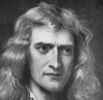
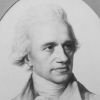

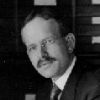
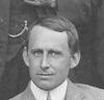
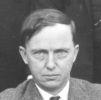
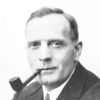
Revolutionaries of the Cosmos: The
Astro-physicists
by I.S. Glass
(pp 317 + xiii, illustrs. ISBN 978-0-19-857099-8)
Revolutionaries of the Cosmos: The Astro-physicists published 2006 by Oxford University Press.








Revolutionaries of the Cosmos: The
Astro-physicists
by I.S. Glass
(pp 317 + xiii, illustrs. ISBN 978-0-19-857099-8)
Revolutionaries of the Cosmos: The Astro-physicists published 2006 by Oxford University Press.
|
Revolutionaries of the Cosmos is about eight astronomers who applied ideas drawn from physics to astronomy and made dramatic changes to the world-pictures that they inherited. They showed that celestial objects are composed of the same materials as the earth and that they behave in the same way. They displaced successively the earth, the sun and finally the Milky Way galaxy from being the centre of the universe. This book contains their biographies and outlines their greatest discoveries. Hard work, physical insight, desire for fame and a strong belief in the rightness of their own ideas were characteristic of all eight. Their often argumentative outlook led them into bitter controversies with their contemporaries. But their successes arose from the outstanding clarity of their thoughts, their practical ability and their strong sense of direction in science. As a teenager I enjoyed and was stimulated by E.T. Bell's Men of Mathematics, a lively and gossipy account of the lives and work of the great mathematicians and I later regretted that nothing similar was available in my own field - astrophysics. This book was initially conceived to fill the gap but, as the project matured, I found that I preferred to take a deeper approach than Bell and therefore chose a smaller number of subjects. |

|
|

|
|
|
Philosophy is written in the greatest book, one that stands open before our eyes (I speak of the Universe). But it cannot be comprehended without first understanding the language and knowing the characters in which it is written. That language is mathematics, and the characters are triangles, circles and other geometric figures. Without these, it is humanly impossible to understand the words; without these, one wanders vainly about in a dark labyrinth (Galileo: Il Saggiatore, 1623). ... and if philosophy were what is contained in Aristotle's books, you would in my opinion be the greatest philosopher in the world, so well does it seem to me that you have ready at hand every passage that he wrote (Galileo, 1641). ... the falsity of the Copernican system ought not to be doubted in any way, and most of all not by us Catholics who have the undeniable authority of Holy Scripture, interpreted by the best theologians ... if the observations and conjectures of Copernicus are insufficient, those of Ptolemy, Aristotle and their followers are in my view even more false (Galileo, 1641). |
And the same year [1666] I began to think of gravity extending to the orb of the Moon ... I deduced that the forces which keep the Planets in their Orbs must [be] reciprocally as the squares of their distances from centers about which they revolve: and thereby compared the force requisite to keep the Moon in her Orb with the force of gravity at the surface of the earth, and found them answer pretty nearly. All this was in the two plague years of 1665 and 1666, for in those days I was in the prime of my age for invention, and minded Mathematicks and Philosophy more than at any time since (Newton, memorandum in Portsmouth Collection). ...at this he [Newton] fired and calld me all the ill names Puppy etc. that he could think of. All I returned was I put him in mind of his passion desired him to govern it and keep his temper. This made him rage worse, and he told me told me how much I had receaved from ye Governmt in 36 years I had served ... I sayd nothing to him in return but with a little more spirit than I had hitherto shewed told them, that God (who was seldom spoke of with due Reverence in that Meeting) had hitherto prospered all my labours and I doubted not would do so to an happy conclusion, took my leave and left them (Flamsteed, 1711). |
||

|
|

|
|
|
Then, speaking of himself, he said, with a modesty of manner which quite overcame me, when taken with the greatness of the assertion: `I have looked further into space than ever human being did before me. I have observed stars of which the light, it can be proved, must take two million years to reach the earth'. I really and unfeignedly felt at the moment as if I had been conversing with a supernatural intelligence (Thomas Campbell, poet). It has been generally supposed that it was a lucky accident that brought this star [Uranus] into my view; this is an evident mistake. In the regular manner I examined every star of the heavens, not only of that magnitude but many far inferior, it was that night its turn to be discovered (Herschel, relating his discovery of Uranus). |
It was just at this time [1862], when a vague longing after newer methods of observation for attacking many of the problems of the heavenly bodies filled my mind, that the news reached me of Kirchhoff's great discovery of the true nature and the chemical composition of the sun from his interpretation of the Fraunhofer lines. This news was to me like the coming upon a spring of water in a dry and thirsty land. Here at last presented itself the very order of work for which in an indefinite way I was looking -- namely, to extend his novel methods of research upon the sun to the other heavenly bodies. A feeling of inspiration seized me: I felt as if I had it now in my power to lift a veil which had never before been lifted; as if a key had been put into my hands which would unlock a door behind which lay the unknown mystery of the true nature of the heavenly bodies ... (Huggins, 1897). |
||

|
|

|
|
But though dangerous when unrestrained, the imagination, when rightly exercised, is the best guide of the astronomer. His dreams run far ahead of his accomplishments, and his work of today is part of the development of a plan projected years ago. He perceives that a few generations hence many of the instruments and methods of his time are to be replaced by better ones, and he strains his vision to obtain some glimpse, imperfect though it be, into the obscurities of the future. As he sits in his laboratory, surrounded by lenses and prisms, gratings and mirrors, and the other elementary apparatus of a science that subsists on light, he cannot fail to entertain the alluring thought that the intelligent recognition of some well-known principle of optics might suffice to construct, from these very elements, new instruments of enormous power ... (Hale, 1908). |
The inside of a star is a hurly-burly of atoms, electrons and aether waves. We have to call to aid the most recent discoveries of atomic physics to follow the intricacies of the dance. We started to explore the inside of a star; we soon find ourselves exploring the inside of an atom. Try to picture the tumult! Dishevelled atoms tear along at 50 miles a second with only a few tatters left of their elaborate cloaks of electrons torn from them in the scrimmage. The lost electrons are speeding a hundred times faster to find new resting places. Lookout! there is nearly a collision as an electron approaches an atomic nucleus; but putting on speed it sweeps around it in a sharp curve ... (Eddington, 1927). The Monthly Notices [of the Royal Astronomical Society] records how we have hurled at each other mathematical formulae -- the most undodgeable of missiles, when they are right -- and the onlooker will perhaps conclude that someone was badly annihilated. But it is possible that Jeans and I may still have a difference of opinion as to precisely whose corpse lies stricken on the field (Eddington, 1922). |

|
|

|
|
|
Shapley did for the Milky Way system what Copernicus had done for the solar system: He placed our sun and earth in the outskirts of the Milky Way system. He proved conclusively that our sun and earth are definitely not located close to the center of our galaxy (Bart Bok, 1978). Both Hubble and I hope that Shapley's tendency to consider the Magellanic Clouds as his personal property will not deter you from attacking this problem. He has monopolised the Clouds all too long and it is time that the barbed wire fences and the warning signs `Keep out. This means you!' are taken down ... The whole situation has become intolerable and a good fresh breeze is most desirable (Baade, 1949). And out came Congressman Rankin [from the House Un-American Activities Committee]. He came out, pointing his scornful finger at me, and shouted, 'This man has shown more contempt for our committee than anybody who has ever appeared before it.' That was the greatest compliment that I ever had. It was flattering to be held in contempt of that committee (Shapley, 1969). |
From our home on the Earth, we look out into the distances and strive to imagine the sort of world into which we are born ... our immediate neighbourhood we know rather intimately. But with increasing distance our knowledge fades, and fades rapidly, until at last the dim horizon we search among ghostly errors of observation for landmarks that are scarcely more substantial. The search will continue. The urge is older than history. It is not satisfied and it will not be suppressed (Hubble, Darwin Lecture, 1953). In his paper, Extragalactic Nebulae,... E.P. Hubble makes an attack on me which is written in such a tone that I hesitate to give any answer at all ... Hubble's statement that my classification except for nomenclature is practically identical with the one submitted by him is not correct ... As to Hubble's way of acknowledging his predecessors I have no reason to enter upon this question here (Lundmark 1927). |
||
REVIEWS
"Glass ... has clearly been careful in his biographical research, which he
documents in detail after each chapter ... [he] writes clearly,
interestingly and even-handedly throughout ... [he] has written an absorbing
book, which I strongly recommend". Don Fernie, Nature, 440, 744, 2006
"On reading each chapter I felt almost that I had met each of these men
personally, and I certainly know more about them than I ever did before".
Maciej Soltynski, MNASSA, 65, 51, 2006
"Even though this book is beautifully produced and fairly expensive it needs
an ugly word to describe it -- unputdownable. Rarely have I read a book that
enlightened and interested me so much". Sheridan Williams, J Br Astr
Assoc, 116, 98, 2006
"this book stands as a good introduction to those eight key figures together
with their contributions to astronomy... eight nicely balanced stories ..."
Dave Stickland, Observatory, 126, 226, 2006
"I recommend it for anyone who has a general interest in astronomical history
and it may be particularly useful as a supplement for an undergraduate
course on the topic". David Blank, J Astr Hist Heritage, 9, 135, 2006
"Glass paints his pictures 'warts and all' and they are interesting and
readable accounts of his subjects' lives and work". Chris Kitchin,
Astronomy Now, May 2006, 23
"This book is a fascinating blend of technical astronomy, biography, and
history. It is a difficult combination to pull off, and I take my hat off to
Dr Glass ... This is a well-written, informative, and thoroughly enjoyable
book". Allan Chapman, BBC Sky at Night Magazine, June 2006, 102 (Book
of the Month)
"In sprightly prose, often interlaced with quotes, Ian Glass weaves together
these eight lives [warts and all] and their scientific careers.... His latest
book is a happy addition to any library, be it amateur or professional".
Leif Robinson, Sky and Telescope, January 2007, 110
"Glass does a very competent job summarizing and applying the extant
historical literature to build each of his profiles, and gives adequate
credit to those who have laboured in the trenches to bring these characters
to life". David DeVorkin, Journal of the History of Astronomy, 38,
134, 2007.
"... an excellent and very welcome work providing an interesting and
innovative perspective on the history of astronomy." Prof Peter Harman,
Prof of the History of Science, Leicester University.
| The cover illustration is a stained-glass window from the home of William and Margaret Huggins. It depicts the Sun with its "red flames" or prominences seen in hydrogen light, a Fraunhofer spectrum of the Sun, a spiral nebula and a comet. This window is today at the Whitin Observatory of Wellesley College, Wellesley, MA (Courtesy of Prof Richard French, Wellesley College). |